



Published on Sep 24, 2014
Visit http://science.nasa.gov/ for more.
The weekend launch of ISS-RapidScat onboard SpaceX-4 has kickstarted a new era for the International Space Station
as a giant Earth-observing satellite.

Astronaut - A journey to space from Guillaume JUIN on Vimeo.
What does astronaut see from up there? From the red soil of africa, the blue water of oceans, to the green lights of the poles and yellow light of human activity, discover, throught this journey to space, something astoundingly beautiful and strange at the same time.
I wanted to do something different from what has been done before with those shots. Something more dynamic and fast. After all, ISS travel through space at 28.000km/h! There are also more recent footage that have never been used (at least I think...) in other edits.
All the credit goes to the crew members of ISS expeditions 28, 29, 30, 31, 34, shot from 2011 to 2014.
The international Space Station weigh 377 tons, orbits the earth at around 350km from the surface, and does one spin around the earth in 1h30, at 28.000k/h! At 1'11 we can see a little refueling shuttle desintegrating back to earth. At 1'20, it's a little telecom satellitte that is launch in orbit. The little green and purple lights you can see at 1'57 are respectively fishing boats and oil platforms offshore with the big city of Bangkok nearby.
All the footage (around 80GB of pictures) was processed throught after effects/premiere, denoised for some shots, removal of dead pixels for some shots, deflickering, and simple color grading (didnt want to change the already incredible look! just curves, saturation, and some blue crushing). Don't hesitate to comment and ask questions about the video!
Video courtesy of the Earth Science and Remote Sensing Unit, NASA Johnson Space Center
http://eol.jsc.nasa.gov/Videos/CrewEarthObservationsVideos
Editing: Guillaume JUIN
www.guillaumejuin.fr
Music: Astronaut - Vincent Tone
What does astronaut see from up there? From the red soil of africa, the blue water of oceans, to the green lights of the poles and yellow light
of human activity, discover, through out this journey to space, something astoundingly beautiful and strange at the same time.
Video courtesy of the Earth Science and Remote Sensing Unit, NASA Johnson Space Center
EOL VIDEOS Editing: Guillaume JUIN guillaumejuin.fr Music: Astronaut - Vincent Tone

Cygnus service module built by Orbital ATK in their Dulles, Virginia cleanroom is shown here with unfurled UltraFlex
solar panels that will fly for the first time with mated pressurized module on the OA-4 ISS resupply mission on ULA Atlas V rocket
on Dec. 3, 2015 from Cape Canaveral, Florida.
Credit: Orbital ATK

The Orbital ATK OA-4 service module sits in the cleanroom, with a large portion of the electronics on the vehicle visible in this photograph.
The International Space Station grapple hook is visible.
Copyright © Alex Polimeni

Orbital ATK Cygnus pressurized module unveiled inside Space Station Processing Facility at Kennedy Space Center in Florida as engineers remove shipping container.
The module will be joined to the Cygnus service module before launch in December 2015.
Photo credit: NASA/Jim Grossmann

Orbital ATK OA-4 Cygnus service module assembled in the cleanroom in Dulles, Virginia has arrived at NASA’s Kennedy Space Center
for integration with the pressurized module. The OA-4 Cgynus spacecraft is slated to launch on resupply mission to the ISS on ULA Atlas V rocket
on Dec. 3, 2015 from Cape Canaveral, Florida. Credit: Orbital ATK

Up-close view of Orbital Sciences Cygnus original service module outfitted with propulsion, power generating solar arrays
and guidance during exclusive visit by Ken Kremer/Universe Today to observe prelaunch processing by Orbital Sciences at NASA Wallops, VA.
Service module gets attached to pressurized cargo module and flies Cygnus vehicle to ISS.
Credit: Ken Kremer

Cygnus original pressurized cargo module – side view – during prelaunch processing by Orbital Sciences at NASA Wallops, VA.
Credit: Ken Kremer

Orbital ATK OA-4 mission patch artwork for resupply flight to the International Space Station. Credit: Orbital ATK

This Cygnus launched atop Antares on Jan. 9 and docked on Jan. 12, 2014. Cygnus original pressurized cargo module
– side view – during exclusive visit by Ken Kremer/Universe Today to observe prelaunch processing by Orbital Sciences
at NASA Wallops, VA. ISS astronauts will open this hatch to unload 2780 pounds of cargo.
Docking mechanism hooks and latches to ISS at left.
Credit:Ken Kemer
Further Up Yonder from Giacomo Sardelli on Vimeo.
Further Up Yonder is available for download in 2K original resolution on my blog: http://wp.me/p2fVm6-bv
Facebook page - Making of coming soon! https://www.facebook.com/furtherupyonder
***UPDATE / SUBTITLES***
Malay, Greek, Russian, Turkish, Hungarian, Esperanto, Thai, Dutch, Latvian, Polish, Czech, Chinese, Bulgarian, French, German, Spanish, Portuguese, Italian and English subtitles on universalsubtitles.org bit.ly/WuZ4z2
You are welcome to add subtitles in your language, you will be credited for your help. Thanks!
***UPDATE / 100.000 Plays!***
After just a week, we reached the awesome goal of 100K plays. Thanks to everybody who shared, commented, liked and got inspired by watching Further Up Yonder. It has been an intense week, spent answering a ton of nice messages that people from all over the world sent to me. You made possible to have this video featured on blogs, forums and major media websites during this week. You helped this video crossing borders, as the astronauts asked us, reaching out to every continent. Thanks for your incredible support. Keep sharing!
***TO THE STARS!***
A timelapse message from ISS to all Humankind. - 2K version available on my blog: http://wp.me/p2fVm6-bv
I wanted to use pictures taken from the International Space Station to tell a story and share the message sent by the astronauts who worked on the station in the last 11 years.
They are working to open a Gateway to Space for all humankind, but people on Earth must understand that they have to get rid of the concept of borders on our planet if they want to follow the astronauts to new worlds in outer space. While the cosmonauts speak a day passes on Earth, from dawn to sunset, until the Gateway opens with a burst of light. The ISS then gains speed, the astronauts are leaving our planet which they see spinning faster and faster, merging earth, oceans and people together, ready to follow them, Further Up Yonder.
Making of
As a filmmaking student, this was my first attempt to craft a timelapse video. It has been a time consuming process, but it turned out as one of my most satisfying projects.
I focused my workflow on colours and harmony of movements, syncing every frame with the music and the voices of the astronauts. Every picture has been post processed individually before being imported in the NLE software, as I tried to take the most out of every image in terms of colours, contrast and neatiness.
Pictures were downloaded from the Image Science & Analysis Laboratory, NASA Johnson Space Center and edited with Photoshop CS6. Even if they were Hi-res images shot with Nikon D3S cameras, a lot of noise removal and color correction was needed, especially for those shots at ISO 3200, which was the highest ISO speed limit I've allowed myself to use, exception made for the last sequence of the spinning world, which comes from a sequenze of shots taken at ISO 12800. Daytime shots were taken at ISO 200. I've used Topaz Denoise 5 for noise removal, as it is very powerful and accurate when dealing with shadows and blacks.
Editing was made with Adobe Premiere CS6, with a 2K workflow, which allowed me to scale, rotate and pan image sequences whose native resolution is 4K. The video was downscaled to 1280x720 resolution for Vimeo. The original 2K version is available for download on my blog (link on top of this description).
Credits
Images courtesy of Image Science & Analysis Laboratory, NASA Johnson Space Center, downloadable for non-commerical use from http://eol.jsc.nasa.gov/
Music: Synthetic Truth, by digitalR3public - licensed under a Creative Commons - Attribution 3.0 License: http://soundcloud.com/digitalr3public/synthetic-truth
Audio messages courtesy of NASA: http://www.nasa.gov
Earth | Time Lapse View from Space, Fly Over | NASA, ISS from Michael K�nig on Vimeo.
Live streaming video by Ustream
In footage recently posted to YouTube, Expedition 38 astronauts Mike Hopkins and Rick Mastracchio identify different world cities
from their vantage point aboard the International Space Station. The video tour of the globe visits southern Italy, Greece,
and several regions in the United States, including the home states and cities of the two astronauts.
"I just talked to my wife at home just 15 minutes ago; she said the weather�s beautiful down there,"
one of the men can be heard saying as ISS passes over Houston, Texas.
Have you ever sat outside on a starry night and just watched the stars move slowly above you?
Here�s a video that shows what it is like to sit back on a spaceship and gaze at the ever-changing sky above.
This timelapse was compiled from recent images taken from the International Space Station.
Hugh Carrick-Allan, a 3D Animator/VFX artist living in Sydney Australia used a sequence of 52 images
posted on the NASA Crew Earth Observation website. The video also features the Aurora Australis and and some random satellites.
Published on May 19, 2016 Music by Category News & Politics License Standard YouTube License

NASA astronaut Scott Kelly and ESA astronaut Tim Peake shared a series of aurora photographs taken from
the International Space Station on Jan. 20, 2016. Kelly (@StationCDRKelly) wrote, "#goodmorning #aurora and the Pacific Northwest!
#YearInSpace" and Peake (@astro_timpeake) followed up with, "Getting a photo masterclass from @StationCDRKelly – magical #aurora"
The dancing lights of the aurora provide spectacular views on the ground, but also capture the imagination of scientists who study
incoming energy and particles from the sun. Aurora are one effect of such energetic particles, which can speed out from the sun
both in a steady stream called the solar wind and due to giant eruptions known as coronal mass ejections or CMEs.
Image Credit: ESA/NASA
Find details
of the experiments flown on ISS to date
Here is
Earth cams from the ISS
See the live cams from the international Space station and track it's location above the Earth!!
ANd an archive of photos pictures from the astronauts on the International Space station!
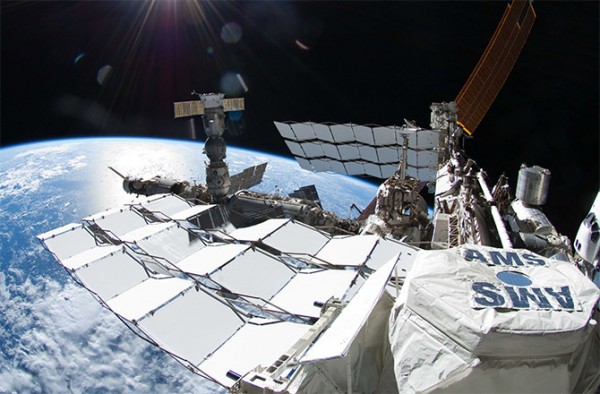
The hint of dark matter came from this instrument, the Alpha Magnetic Spectrometer (AMS-02) aboard the International Space Station. Image via NASA
One of the great discoveries of the coming century will be the direct detection of dark matter. This mysterious substance, thought to compose some 23%
of the mass of our universe, is currently one of the most-sought substances in existence, the source of thousands of scientific papers and endless hours of
speculation over the last half of the last century, despite the fact that it has not yet been directly detected. Now an analysis of 41 billion cosmic rays
striking a state-of-the-art instrument called the Alpha Magnetic Spectrometer (AMS) particle detector aboard the International Space Station (ISS)
may have come close to detecting dark matter
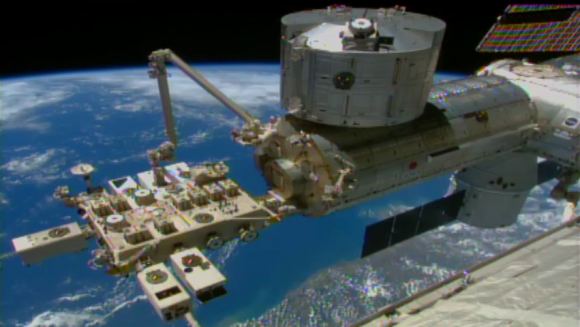
The Japanese robotic arm installs the CATS experiment on an external platform on Japan�s Kibo lab module.
The SpaceX Dragon commercial cargo craft is seen at the right center of the image. Credit: NASA TV
See way cool installation video below
�Robotic controllers let the CATS out of the bag!� So says NASA spokesman Dan Huot in a cool new NASA
timelapse video showing in detail how CATS crawled around the space stations gangly exterior and clawed its way into its new home �
topped off with a breathtaking view of our home planet that will deliver science benefits to us down below.

Test path in GREEN In the coming years, thousands of satellites, several next-generation space telescopes and even a few space habitats are expected to be launched into orbit. Beyond Earth, multiple missions are planned to be sent to the lunar surface, to Mars, and beyond. As humanity’s presence in space increases, the volume of data that is regularly being back sent to Earth is reaching the limits of what radio communications can handle.

One of the massive radio antennas supporting NASA’s Deep Space Network (DSN). Credit: NASA

This image shows the Modulated X-ray Source, a key component in NASA’s first-ever demonstration of X-ray communication in space. Credits: NASA/W. Hrybyk

The NavCube could play a vital role in helping to demonstrate X-ray communications in space. Credit: NASA/W. Hrybyk

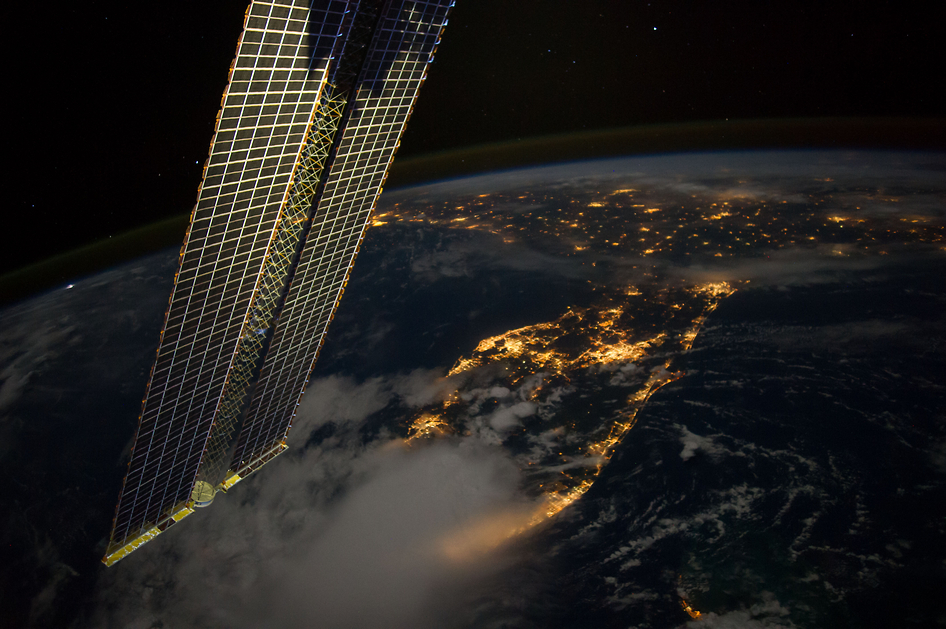
NASA astronaut Reid Wiseman captured this image of Florida to Louisiana just before dawn,
taken from the International Space Station, and posted it to social media on Friday, Sept. 12.
Wiseman, Commander Max Suraev and Flight Engineer Alexander Gerst began their first full workweek
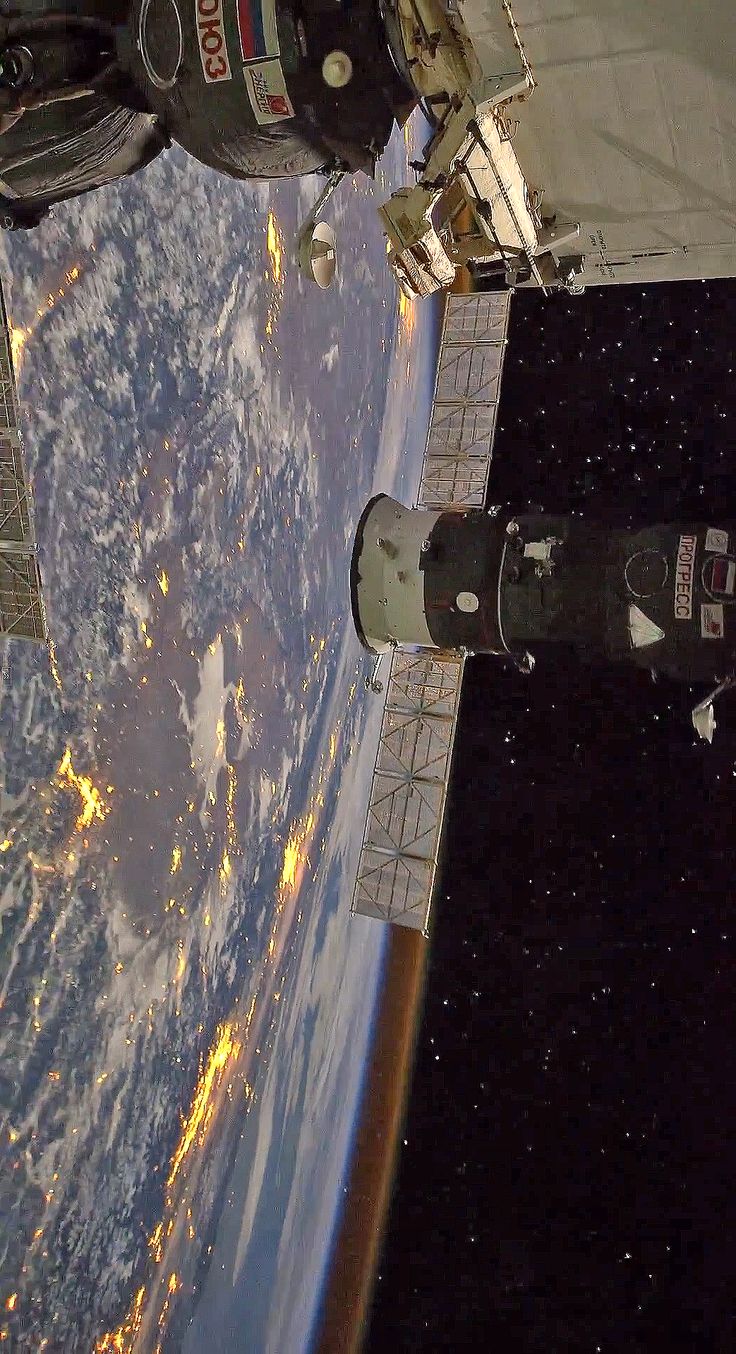


So beautiful it's hard to believe it's real. Night from the ISS
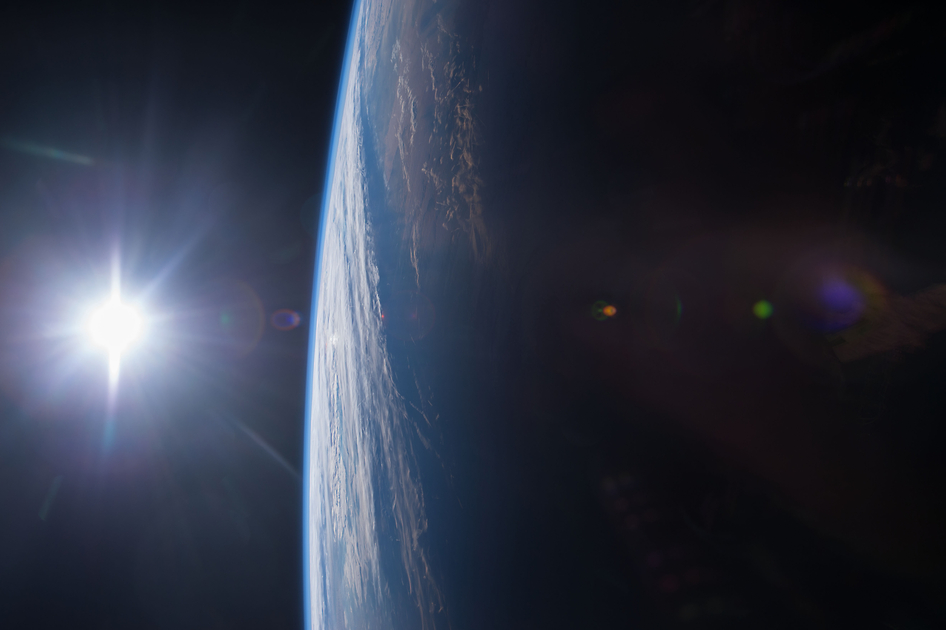
From the International Space Station, Expedition 42 Flight Engineer Terry W. Virts took this photograph
of the Gulf of Mexico and U.S. Gulf Coast at sunset and posted it to social media on Dec. 14, 2014.
The space station and its crew orbit Earth from an altitude of 220 miles, traveling at a speed of approximately 17,500 miles per hour.
Because the station completes each trip around the globe in about 92 minutes, the crew experiences 16 sunrises and sunsets each day.
Image Credit: NASA/Terry Virts
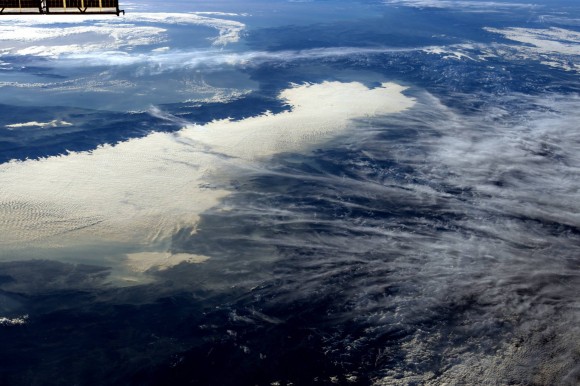
Spectacular View of the Alps From Space!
Expedition 42 Flight Engineer Samantha Cristoforetti of the European Space Agency (ESA)
took this photograph of the Alps from the International Space Station. She wrote,
�I�m biased, but aren�t the Alps from space spectacular? What a foggy day on the Po plane,
though! #Italy� Credit: NASA/ESA/Samantha Cristoforetti
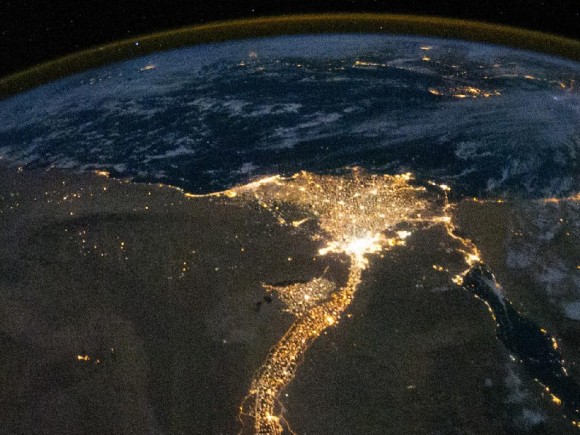
The Nile River and Delta, viewed at night by the Expedition 25 crew on Oct. 28, 2010. Credit: NASA
Planet Earth boasts some very long rivers, all of which have long and honored histories.
The Amazon, Mississippi, Euphrates, Yangtze, and Nile have all played huge roles in the rise and evolution of human societies.
Rivers like the Danube, Seine, Volga and Thames are intrinsic to the character of some of our most major cities.

Expedition 46 flight engineer Tim Peake of the European Space Agency (ESA) shared this stunning nighttime
photograph with his social media followers on Jan. 25, 2016, writing, "Beautiful night pass over Italy, Alps and Mediterranean." Image Credit: ESA/NASA Last Updated: Jan. 26, 2016 Editor: Sarah Loff Tags: Earth, Expedition 46, Image of the Day, International Space Station (ISS)
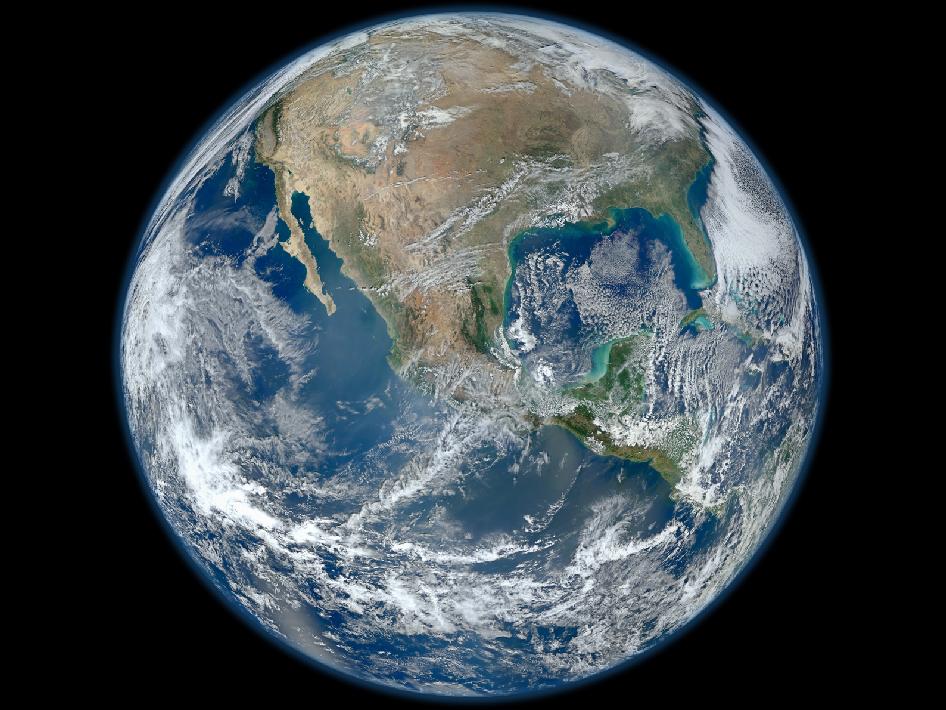

The Nile River and Delta, viewed at night by the Expedition 25 crew on Oct. 28, 2010. Credit: NASA
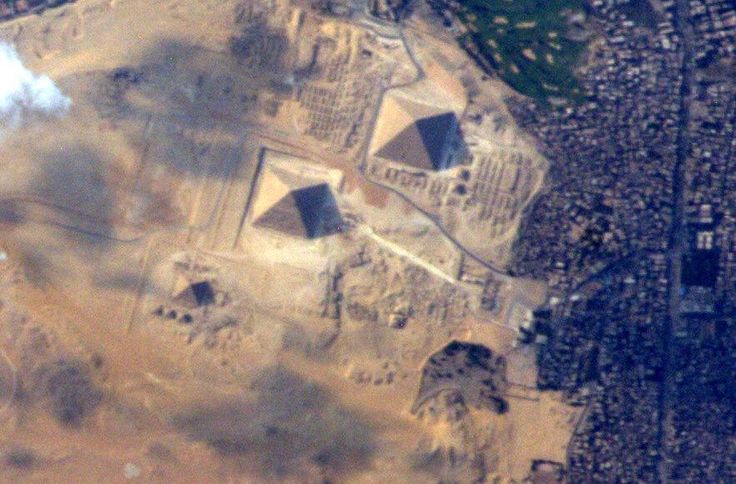
The Great Egyptian Pyramids of Giza from space and the International Space Station on 10 June 2015.
“It took me until my last day in space to get a good picture of these! Credit: NASA: Terry Virts/@AstroTerry

Expedition 47 Commander Tim Kopra of NASA captured this brightly lit night image of the city of Chicago on April 5, 2016,
from the International Space Station. Kopra (@astro_tim) wrote, "#Goodnight #Chicago from @Space_Station. #CitiesFromSpace" Image Credit: NASA

A Cygnus cargo spacecraft named the SS Rick Husband is being prepared inside the Payload Hazardous Servicing Facility
at NASA’s Kennedy Space Center for upcoming Orbital ATK CRS-6/OA-6 mission to deliver hardware and supplies to the
International Space Station. Cygnus is scheduled to lift off atop a United Launch Alliance Atlas V rocket on March 22, 2016.
Credit: Ken Kremer/kenkremer.com

The Orbital ATK Cygnus spacecraft sits on top of an Atlas V rocket ready for launch to the International Space Station.
The mission is set to lift off on Tuesday, March 22, from Space Launch Complex 41 at Cape Canaveral Air Force Station in Florida.
The 30 minute launch window opens at 11:05 p.m. EDT. Today’s L-1 forecast shows a 90 percent chance of favorable weather conditions
for launch. NASA TV coverage of the event begins at 10 p.m. Image Credit: United Launch Alliance Last Updated: March 22, 2016 Editor: Steve Fox

The Orbital ATK CRS-6 launch vehicle with the Cygnus cargo spacecraft bolted to the top of the Atlas V rocket
is poised for launch at Space Launch Complex 41 at Cape Canaveral Air Force Station on March 22, 2016. Credit:Ken Kremer
Published on Mar 23, 2016 A United Launch Alliance Atlas V rocket lifts off from Space Launch Complex 41 at Cape Canaveral Air Force Station.
Liftoff was at 11:05 p.m. EDT. The Orbital ATK CRS-6 Cygnus spacecraft on a commercial resupply services mission
to deliver 7,500 pounds of supplies to the International Space Station. Credit: NASA Category Science & Technology License Standard YouTube License
Published on Mar 24, 2016 Mobius video camera placed at Florida launch pad captures blastoff up close of Orbital ATK OA-6 (CRS-6) mission riding to orbit atop a United Launch Alliance Atlas V rocket on March 22, 2016 at 11:05 p.m. EDT from Space Launch Complex-41 on Cape Canaveral Air Force Station. Credit: Ken Kremer/kenkremer.com Category People & Blogs License Standard YouTube License

Long exposure streak shot of blastoff of United Launch Alliance Atlas V rocket carrying Orbital ATK’s
Cygnus spacecraft at 11:05 p.m. EDT on March 22, 2016, with foreground view of world famous Vehicle Assembly Building (VAB)
at NASA’s Kennedy Space Center in Florida. Atlas V lifted off from nearby Space Launch Complex 41 on Cape Canaveral Air Force Station
in Florida. Credit: Alex Polimeni/Spaceflight Now

ULA Atlas V rockets to orbits with Orbital ATK Cygnus OA-6 in this long exposure streak
shot taken from the roof of the world famous Vehicle Assembly Building (VAB) at NASA’s Kennedy Space Center in Florida.
Liftoff from nearby Space Launch Complex 41 on Cape Canaveral Air Force Station in Florida occurred at 11:05 p.m.
EDT on March 22, 2016. Credit: Julian Leek

Orbital ATK Cygnus CRS-6/OA-6 space freighter arrives for capture and berthing at the International Space Station
on Saturday, March 26, 2016 at 6:51 a.m. EDT. Credit: NASA TV

Orbital ATK Cygnus CRS-6/OA-6 space freighter arrives for capture and berthing at the
International Space Station on Saturday, March 26, 2016 at 6:51 a.m. EDT. Credit: NASA/ESA/Tim Peake

Expedition 47 Flight Engineer Tim Peake of the European Space Agency took this photograph on April 6, 2016,
as the International Space Station flew over Madagascar, showing three of the five spacecraft currently docked to the station.
The station crew awaits the scheduled launch today, April 8, of the third resupply vehicle in three weeks: a SpaceX Dragon cargo spacecraft,
which will be the sixth spacecraft docked following its arrival and installation to the Harmony module on Sunday, April 10.
Dragon is carrying 6,900 pounds (3,130 kilograms) of science, crew supplies and hardware;
the largest payload is the Bigelow Expandable Activity Module (BEAM).
The BEAM will be attached to the Tranquility module a week after its arrival for a series of habitability tests over two years.

Rendering of Launch of SNC’s Dream Chaser Cargo System Aboard an Atlas V Rocket. Credits: Sierra Nevada Corporation

Artist’s concept of the Sierra Nevada Corporation Dream Chaser spacecraft launching atop the United Launch Alliance Atlas V rocket in the 552 configuration on cargo missions to the International Space Station. Credit: ULA

Sierra Nevada Corporation’s Dream Chaser spacecraft docks at the International Space Station. Credits: Sierra Nevada Corporation

NASA Deputy Administrator Lori Garver and Bigelow Aerospace founder Robert Bigelow stand in front of the BEAM in January, 2013.
Image: NASA/Bill Ingalls
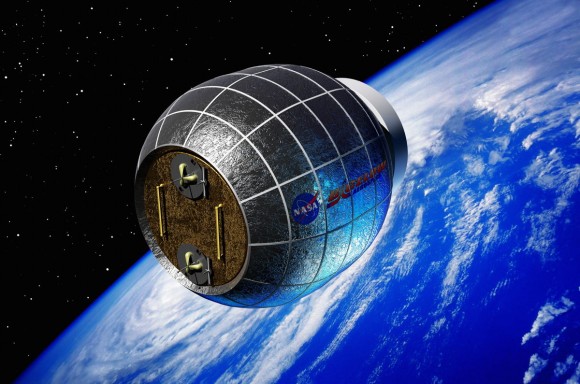
Artist�s concept of the Bigelow Expandable Activity Module (BEAM), currently scheduled to be added to the International Space Station in 2015.
Credit: Bigelow Aerospace.
Astronauts aboard the International Space Station are going to be getting an addition in the near future, and in the form of an inflatable room
no less. The Bigelow Expandable Activity Module (BEAM) is the first privately-built space habitat that will added to the ISS, and it will be
transported into orbit aboard a Space X Falcon 9 rocket sometime next year.

Schematic of the Bigelow Aerospace B330 expandable module tucked inside the fairing of a ULA Atlas V 552 rocket. Credit: ULA

File photo of Atlas V rocket in with 5 meter diameter payload fairing and 5 solid rocket boosters
following rollout to Space Launch Complex 41 at Cape Canaveral Air Force Station, FL.
Credit: Ken Kremer – Credit: Ken Kremer

Launch of Bigelow B330 expandable habitat module tucked inside ULA Atlas V payload fairing. Credit: ULA

The Bigelow Expandable Activity Module (BEAM) is an experimental expandable capsule that attaches to the space station. Credits: Bigelow Aerospace, LLC

This sped-up animation shows the ISS’s robotic arm removing the uninflated BEAM from the Dragon capsule
and attaching it to the station. Credit: NASA

This computer rendering shows the Bigelow Expanded Activity Module in its fully expanded configuration. Image: NASA


Interior schematic view of Bigelow Aerospace B330 expandable module. Credit: Bigelow Aerospace
Closely related to the space station is the International Space settlement contest!!

Boeing CST-100 commercial spaceship will launch US astronaut crews from Florida to the International Space Station. Credit: Boeing
KENNEDY SPACE CENTER, FL � NASA Administrator Charles Bolden announced that Boeing and SpaceX have won the high stakes
and history making NASA competition to build the first ever private �space taxis� to launch American astronauts to the International Space Station
(ISS) and restore America�s capability to launch our crews from American soil for the first time since 2011.

SNC’s Dream Chaser Spacecraft and Cargo Module attached to the ISS. Credit: SNC
Published on Oct 7, 2015 This animated video represents Sierra Nevada Corporation’s (SNC) Dream Chaser® Cargo System mission.
The Dream Chaser Cargo System is an innovative complete cargo transportation system capable of transporting
pressurized and unpressurized cargo to and from low-Earth orbit destinations such as the International Space Station.
This system is designed to fulfill NASA’s current Commercial Resupply Services 2 (CRS2) and other fully autonomous missions.
The uncrewed Dream Chaser spacecraft launches inside a standard 5m fairing, transporting pressurized and unpressurized cargo concurrently.
Further advantageous capabilities include cargo module disposal, low-g, gentle runway landing return of cargo and sensitive science payloads
with immediate access, all attributes that are unique to the reusable, lifting-body Dream Chaser spacecraft.
Category Science & Technology License Standard YouTube License

In June of 2017, NASA’s Neutron Star Interior Composition Explorer (NICER) was installed aboard the International Space Station (ISS). The purpose of this instrument is to provide high-precision measurements of neutron stars and other super-dense objects that are on the verge of collapsing into black holes. NICER is also be the first instrument designed to test technology that will use pulsars as navigation beacons.

This image of the whole sky shows 22 months of X-ray data recorded by NASA’s Neutron star Interior Composition Explorer (NICER) payload aboard the International Space Station during its nighttime slews between targets. Credits: NASA/NICER

The NICER payload, shown here on the outside of the International Space Station. Credit: NASA

The International Space Station (ISS) is about to get a little bigger. On July 21,2021 the Russian Space Agency launched the station’s newest module into orbit aboard a Proton-M rocket. The module, dubbed Nauka (which means science), is the station’s first new module since 2016, aside from some new docking ports and airlocks. The Nauka module includes several important additions that will enhance the station’s capabilities.

Artist’s Rendering of Nauka attached to the Station. Credit: NASA.

The production company that’s playing a key role in a space movie project involving Tom Cruise says it’s working with Axiom Space to add a sports and entertainment facility to the International Space Station by the end of 2024.
om Cruise is set to shoot a movie in space, but he won't be the first. So what does a blockbuster in space look like? Well, don't expect any explosions for a start... Subscribe to CNET: CNET playlists: : Download the new CNET app Like us on Facebook: Follow us on Twitter: Follow us on Instagram: